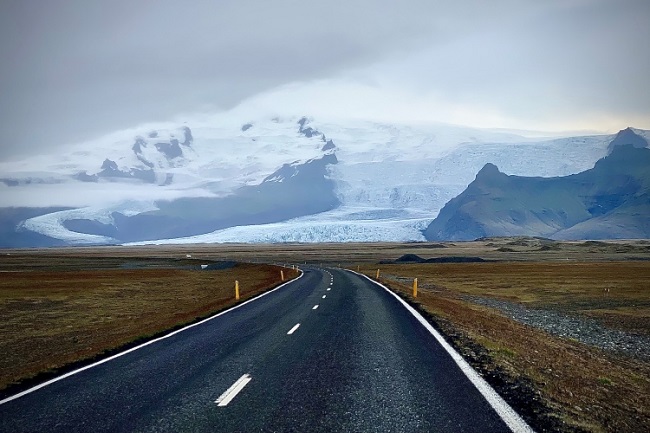The Ring Road, or Route 1, is Iceland’s iconic 1,332-kilometer highway that circles the island, connecting most of its inhabited parts.
The road offers an unparalleled journey through some of the most breathtaking landscapes on Earth, from volcanic craters and lava fields to glaciers and waterfalls. If you’ve ever dreamed of taking this road trip, this guide is your comprehensive resource.

Everything You Need to Know About Ring Road Iceland
We delve deep into what you need to know to make this adventure unforgettable, including top stops, travel tips, and more.
1. Best Time to Drive the Ring Road
The best time to embark on this epic journey is between late spring and early autumn. During this period, the country experiences extended daylight hours and generally mild weather conditions, making it safer and more enjoyable to drive.
While it’s possible to travel the Ring Road in winter, be prepared for harsh conditions and limited daylight.
2. Necessary Preparations
Before hitting the road, it’s crucial to make sure your vehicle is up to the task. Renting a 4×4 vehicle is highly recommended, especially if you plan to venture off the main route or tackle the drive in winter months.
Additionally, securing a local SIM card is wise, as many stretches of the Ring Road have limited to no cellular service, making communication in emergencies a concern.
3. Gas and Service Stops
Gas stations along the Ring Road are sparse. It’s imperative to fill up the tank whenever possible, as the next station could be miles away. Many stations are automated and require a credit card with a pin for transactions. Carrying some cash for smaller stations that might not accept cards is a good practice.
4. Must-See Stops Along the Route
Don’t miss out on iconic stops like the Jokulsarlon Glacier Lagoon, the black sand beaches of Vik, and the stunning waterfalls like Skogafoss and Seljalandsfoss. Allocate enough time to explore these natural wonders; rushing through them would defeat the purpose of your Icelandic adventure.
5. Accommodation
Options for lodging can be limited and fill up quickly, especially during peak seasons. Booking your accommodations in advance is strongly advised. Whether you opt for guesthouses, hotels, or campsites, advanced reservations can save you from the trouble of last-minute searches.
6. Local Laws and Regulations
Familiarize yourself with Iceland’s driving laws. For example, off-road driving is illegal and heavily penalized. Always adhere to speed limits and know that seat belts are mandatory for everyone in the vehicle.
7. Weather Conditions
Icelandic weather is unpredictable. Always check the weather forecast and road conditions before setting out for the day. Carry necessary gear like rain jackets, sunblock, and extra clothing layers to be prepared for sudden changes.
8. Emergency Numbers and Health Care
The emergency number in Iceland is 112. Medical facilities are limited outside major towns, so carrying a basic first-aid kit and necessary medications is advisable.
9. Food and Supplies
Most towns have grocery stores, but options can be limited. Packing snacks and non-perishable food items is a good idea. Also, remember that alcohol is only sold in designated liquor stores and can be expensive.
10. Capture the Moments but Respect Nature
Take plenty of photos, but respect the local flora and fauna. Stick to designated paths and parking areas. Iceland takes environmental conservation very seriously; be a responsible traveler.
11. Navigational Tools
Though the Ring Road is well-signed, having a GPS or a reliable map is indispensable. Many travelers recommend downloading offline maps as well, given that internet service can be spotty in remote regions. Apps like Google Maps or specialized GPS devices offer real-time updates, helping you to plan your route more efficiently.
12. Car Rental Tips
When choosing a rental car, look for companies that offer inclusive insurance packages covering gravel protection and sand and ash damage, as these are common risks when driving in Iceland. Be sure to thoroughly inspect the car before leaving the rental lot and take pictures of any existing damage to avoid disputes later.
Conclusion
Driving Iceland’s Ring Road offers an unparalleled opportunity to experience the country’s diverse and awe-inspiring landscapes.
With proper planning and an understanding of what to expect, your Ring Road adventure will undoubtedly become one of your most cherished experiences. Use this guide as your blueprint, and you’ll be well on your way to navigating Iceland’s Ring Road like a pro.